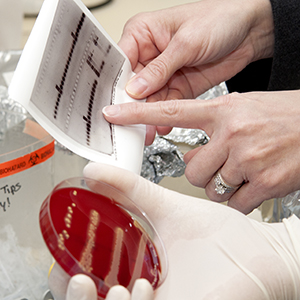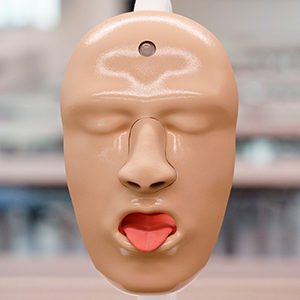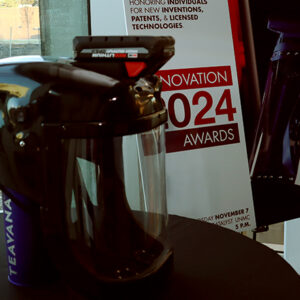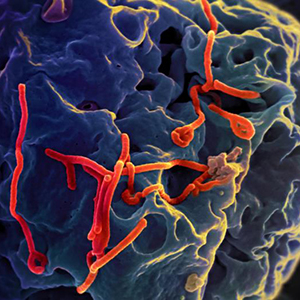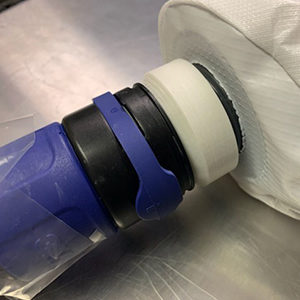Description
New device treats biofilm infections
UNMC researchers have developed a system that treats bacterial biofilms and enhances the delivery and penetration of drugs delivered through iontophoresis—a process that uses an electric current to drive the ions of a chemical or drug through the skin and into deeper tissues.
Biofilms—a slimy, layered community of microbes that can form on wounds, medical devices and implants—are notoriously difficult to treat. Biofilms are typically resistant to most antibiotics and quickly regrow if improperly treated. Infected devices, such as implants, often need to be replaced with highly invasive and risky surgical procedures. For infected wounds, successfully treating a biofilm could mean removing the infected tissue.
UNMC’s new device improves the current standard treatments of washing wounds, absorption of topical therapeutics through the skin, or surgically removing the biofilm from the surrounding tissue. These current remedies—with therapeutics that are unable to target all of the microbes in the biofilm community—could cause the biofilm bacteria to spread further into the wound, damage surrounding healthy tissue. Failing to fully remove or kill all of the biofilm microbes could result in the biofilm reforming.
When operated at high electrical currents, iontophoresis devices allows for faster transport and penetration of a chemical or drug into the skin. Unfortunately, the higher currents also cause burns, discoloration or rashes on patients’ skin. But treating a biofilm-infected wound with UNMC’s water-stable, hydrogel-based ionic circuit system could minimize the burns and discomfort associated with current iontophoresis devices while more rapidly and effectively delivering therapeutics to the afflicted tissues.
To learn more about this technology, contact Amanda Hawley, PhD, at ahawley@unmc.edu or 402-310-5602.

